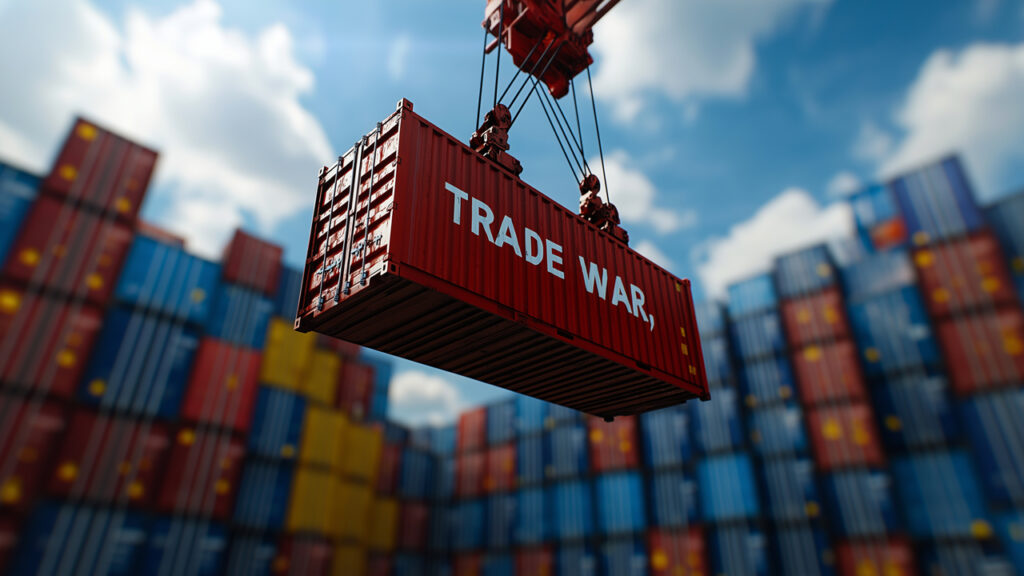
As the global economy reels from escalating trade tensions—particularly between the United States and key economic powers—businesses are entering a period of increased volatility.
Tariff hikes, retaliatory duties, and shifting diplomatic relations are creating a high-stakes chessboard where the next move could significantly impact profits, supply chains, and even long-term market viability.
So how can organizations prepare for such uncertainty?
The answer lies in war gaming—a strategic simulation tool long used by the military and intelligence communities, now gaining traction in the business world. War gaming allows decision-makers to model complex trade scenarios, anticipate cascading effects, and test their crisis response strategies in a low-risk environment.
In this blog, we explore how war gaming can help your organization prepare for the economic shockwaves of an intensifying trade war.
Why War Gaming Works in Trade Conflict Scenarios
Unlike traditional business continuity or risk management approaches, war gaming actively involves key stakeholders in dynamic scenario simulations. Instead of simply documenting contingency plans, participants experience the chaos, ambiguity, and pressure that a real-world crisis creates. It’s experiential learning at a strategic level.
In the context of global trade disputes, war gaming is particularly effective because:
- Tariff impacts are multi-dimensional: They affect everything from procurement costs and inventory to customer pricing, cash flow, and reputational risks.
- Uncertainty is high: Trade policies can shift with elections, geopolitical events, or diplomatic negotiations. Forecasting becomes guesswork without structured scenario thinking.
- Stakeholders must collaborate: Finance, supply chain, legal, public affairs, and executive teams all have a stake in how the organization responds to economic shocks.
Building a Trade War, War Game: A Step-by-Step Framework
To effectively run a trade war war game, organizations should follow a structured approach. Here’s how to set up a scenario-based simulation that leads to actionable insights:
- Define Your Objectives
Start by asking: What decisions are we trying to prepare for?
Some examples:
- How should we respond to a 25% tariff increase on key imports?
- What if a foreign government targets our products with retaliatory duties?
- How will we manage inventory if overseas suppliers are cut off due to sanctions?
Your objectives will shape the scope and participants of the exercise. Are you testing leadership’s agility, stress-testing a specific supply chain, or evaluating financial resilience?
- Develop Realistic Scenarios
Use threat intelligence, economic forecasts, and policy analysis to construct plausible but challenging scenarios. War games aren’t about predicting the future—they’re about preparing for a range of futures.
Sample scenarios might include:
- Scenario A: “Tit-for-Tat Spiral” – The U.S. imposes new tariffs on EU and Asian goods. A global tit-for-tat trade war follows, disrupting export markets and triggering a dip in consumer confidence.
- Scenario B: “Allies Turn Adversaries” – Long-standing trade partners impose sudden retaliatory duties after a failed diplomatic summit, affecting 40% of your import sources.
- Scenario C: “Election Shock” – A new administration introduces sweeping protectionist policies, leading to abrupt regulatory changes and industry-wide uncertainty.
Incorporate variables like political elections, WTO rulings, or regional conflicts to stress-test long-term strategies.
- Identify Key Players and Decision-Makers
The war game should simulate a cross-functional crisis response. Include participants from:
- Executive leadership
- Finance and procurement
- Legal and compliance
- Supply chain and operations
- Public affairs and communications
- Risk and strategy teams
Assign roles and make sure each team understands its authority and responsibilities within the simulation.
- Simulate the Scenario in Stages
Break the scenario into phases (e.g., initial announcement, implementation, countermeasures) and inject new developments in real time.
Example phase progression:
- Phase 1: U.S. increases tariffs by 15% on steel and electronics.
- Phase 2: China retaliates with a 25% tax on U.S. agricultural goods.
- Phase 3: A major supplier halts production due to uncertainty.
- Phase 4: Media backlash and shareholder concern put pressure on leadership.
Inject “curveball” events to test adaptability—perhaps a competitor relocates operations to a tariff-free zone, or a key customer threatens to cancel a contract unless costs are absorbed.
- Capture Insights and Test Strategies
Throughout the simulation, observe decision-making dynamics:
- Were there delays in response due to lack of information or authority?
- Did teams align on priorities (e.g., protect margins vs. retain customers)?
- Which strategies emerged as viable (e.g., alternative sourcing, price renegotiations, lobbying)?
Encourage debriefing after each phase. Document what worked, what failed, and what assumptions need rethinking.
- Build a Playbook for Action
The final output should be more than a post-exercise report. Develop an operational playbook that includes:
- Decision thresholds for adjusting pricing, sourcing, or logistics
- Pre-approved communication templates for customers, investors, and regulators
- Financial modeling assumptions under various tariff levels
- Escalation protocols for activating crisis teams or legal reviews
Update this playbook regularly as global dynamics evolve.
Related: Your Guide to Using Storytelling for Crisis Preparedness
War Gaming as a Strategic Muscle, Not a One-Off Event
War gaming shouldn’t be a one-time event. Treat it as a muscle that your organization strengthens over time. Schedule quarterly simulations to revisit emerging risks, test new markets, or validate assumptions about policy shifts.
By embedding war gaming into your enterprise risk strategy, you build a culture of proactive readiness. The payoff? When real-world tariffs hit, your team isn’t scrambling—they’re executing a plan.
Final Thought: Winning the Trade War Starts with Playing the Right Game
In a world where economic policy is increasingly weaponized, businesses must evolve beyond passive forecasting. War gaming offers a powerful tool to visualize risk, pressure-test resilience, and make better strategic decisions under uncertainty.
The global trade war is already underway. The companies that survive—and thrive—will be the ones that prepare like generals, not gamblers.
Interested in running a war game for your organization?
PreparedEx offers customized economic disruption war games to help companies stress-test their response to complex global events. Contact us to learn how we can support your strategic preparedness.